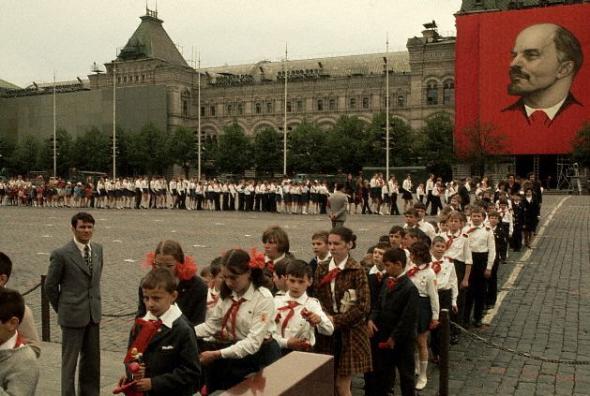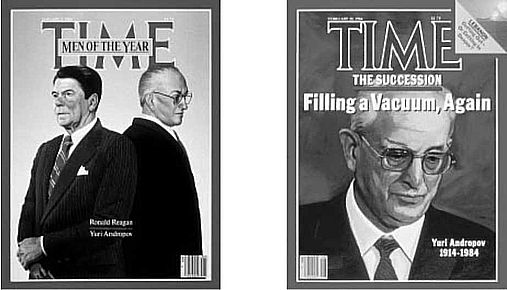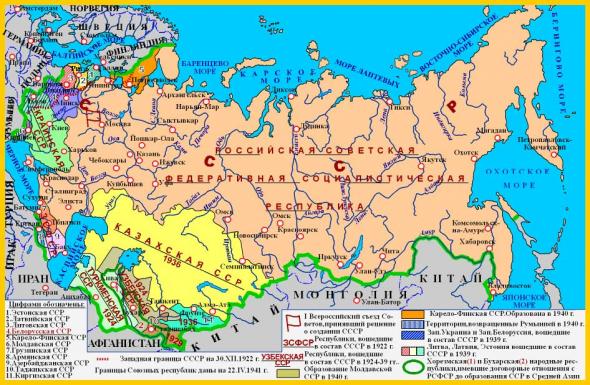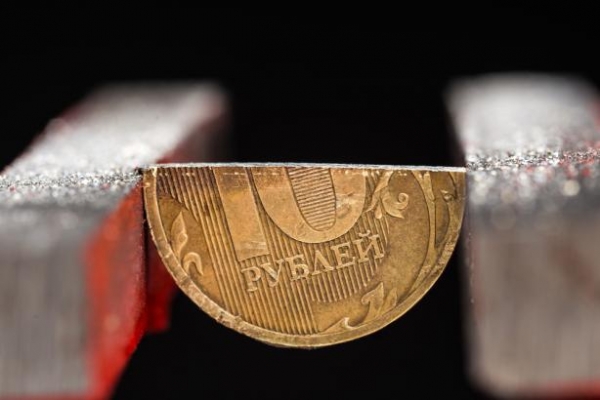.
The Soviet Union in economic terms takes the second place in the world in terms of gross national product, has numerous and well-trained productive forces are highly developed industrially. …Despite the fact that between the economic plans and their implementation in the USSR there are differences, the economic collapse of this country is not even a remote possibility.

In continuing the theme of the speech of the Chairman of the government Medvedev in the air of “Vesti on Saturday”, where he preached a false view of the agriculture of the Soviet Union, with the CIA the end of 1982, about the economy, its geopolitical rival, expressed in the form of a report made at the request of the joint economic Committee of Congress.
*
WHAT WAS SILENT YEGOR GAIDAR.
In his latest book “death of the Empire” Egor Gaidar mentioned only in passing critical American policy paper, probably not realizing its importance for the whole system of Soviet-American relations. It is this “figure of silence” and forces us to tell modern readers about the real assessments of the Soviet economy rejected by economists of the “Chicago school” and “Harvard project”.

After the election of Yuri Andropov 12 November 1982, General Secretary of the Communist party of the Soviet Union, the joint economic Committee of Congress asked the CIA report on the state of the Soviet economy, where “would be represented as its potential opportunities and vulnerabilities”.
Presenting to Congress this report, Senator William Proxmire, Vice-Chairman of the Subcommittee on international trade, Finance and protection of economic interests, felt it necessary to emphasize the following main conclusions from the analysis of the CIA(quoted from the English translation):

“In the Soviet Union there is a steady decline in the rate of economic growth, but in the foreseeable future, this growth will remain positive.
The economy is functioning poorly, it is often observed deviation from the requirements of economic efficiency. However, this does not mean that the Soviet economy is losing vitality and dynamism. Despite the fact that between the economic plans and their implementation in the USSR there are differences, the economic collapse of this country is not even a remote possibility.”
And how many had subsequently “work” and “effort” to make “the impossible possible”!!! But it already questions to other historical figures and characters.

For the knowledge of history, as we know, “working” vulgar straightforward principle: post hoc ergo propter hoc – after this, therefore on this! Will continue quoting the title but we have an extremely important instrument of us intelligence:
“Usually Western specialists working in the Soviet economy, with a focus on her problems,” continued the Senator. – However, the danger of this unilateral approach is that, ignoring the positive factors we get an incomplete picture, and based on it make the wrong conclusion.
The Soviet Union is our main potential enemy, and it gives even more reason in order to have an accurate and objective assessment of the state of its economy. The worst thing we can do is to underestimate the economic power of its main adversary”.

And again interrupting here quoting this report, we explain why we consider it necessary to introduce him to our fellow citizens.
First, it is most vividly shows the level of strategic analysis and forecasting of leading intelligence services of the Western world, its methodology and takes into account the factors.
Secondly, the findings and assessments were the basis for unprecedented “economic war” the United States of America against the Soviet Union waged in the next year.
Thirdly, such analysis and planning is carried out in the United States and to this day, as, for example, clearly shows the progress report of the us National intelligence Council (LDC) “Global trends 2025”, a version of which was promulgated on November 20, 2008

In this context, introduces the reader to the basic provisions of the intelligence the CIA report in 1982 on the state of the Soviet economy:
“You must realize that the Soviet Union, although it is weakened by the inefficient operation of the agricultural sector and burdened with large costs of defense, in economic terms takes the second place in the world in terms of gross national product, has numerous and well-trained productive forces are highly developed industrially.
The USSR also has huge reserves of minerals, including oil, gas, and minerals are relatively scarce and precious metals. Should seriously look at things and think about what might happen if the trends of development of the Soviet economy from the negative become positive”.

Ending presentation of the report, William Proxmire noted that he “must convincingly explain to the members of Congress and the American public the real state of the Soviet economy, which they still had a very vague idea.
The report also suggests that the forecasting of economic development of the Soviet Union contains at least the same degree of uncertainty as to the prospects of our own economy”.
In the report , Henry Rowan, President of the National Council of intelligence, CIA, noted (the contents of the report is abridged):
*
“Western commentators, in analyzing the functioning of the Soviet economy, call it “weak” or “decaying”, while the Soviet Union continues to increase defense spending, increases aggregate social product in real terms, and the size of the gross domestic product (GNP), the Soviet Union ranked second in the world behind only the United States.

We do not believe that economic collapse – a sharp and prolonged decline in GDP – is possible even in the distant future.
Our forecasts indicate that
1. GDP growth will be slow, but remain positive.
2. Delay of economic development due to a combination of factors. Some factors do not depend on the Soviet Union, while others reflect the weaknesses of the Soviet economic system, to eliminate which can not even the new leadership of Andropov.
Certain factors that slow down economic growth, depend on the policy (e.g., funding for defense). These factors can be changed, but this is unlikely to be made in appreciable amounts in the near future.

3. Nevertheless, we believe that in the foreseeable future annual growth
will average from one to two percent. Consumption per capita will reach a constant level or even slightly decrease.
… To improve the lives of Soviet citizens, i.e. to improve their standard of living, Moscow is paying attention for the past nearly 30 years. However, the increase in consumer welfare has always depended on the needs of the army and retreated to second place, to provide a high rate of growth of investment necessary to ensure rapid growth of GDP.
Currently, however, there were indications that the interests of consumers are not treated so rudely. The 11th five-year plan, unlike previous ones, provides a slower rate of growth of investment compared to consumption growth.
…From the point of view of the objectives and priorities put forward by the management, the functioning of the Soviet economy is mixed.

Since the mid 60-ies of the USSR has increased its Arsenal of Intercontinental means of delivery of nuclear weapons almost 6 times, killing, thus, the quantitative superiority of the US in this area and securing the possibility of making a retaliatory nuclear strike.
During the same period, Moscow has more than tripled the numbers of tactical nuclear weapons,reducing the value of nuclear weapons of NATO, which was opposed by the more numerous conventional armed forces of the Warsaw Pact countries….
Along with strengthening its military power, the Soviet Union, until recently, been able to maintain high rates of economic growth.
For the period from 1950 to 1981, the GNP of the Soviet Union, according to the CIA, has grown on average by 4.6% per year, while growth in the US GDP during the same period averaged 3.4% a year.

However, the economic growth of the USSR during this period was constantly slowed, especially since 1978, Average annual growth in GNP was 6 % in 50 years 5% in 60-e years, and almost 4% in the period from 1970 to 1978, During the period from 1979 to 1981 the average annual growth was less than 2 %. It is expected that in 1982 the GNP will increase by approximately 1.5 %.
What is happening in the Soviet economy of the process largely resembles the slowdown in economic growth in the member countries of the Organization for economic cooperation and development (OECD).
For the first 3 years of the 70’s the GDP of OECD countries grew by 5 % per year. The crisis caused by the rise in OPEC oil prices, stopped the economic growth of the OECD countries in 1974 – 1975. Then, in 1976 and 1979 the GDP growth has resumed and amounted to 4 % per year. However, in 1980 and 1981 GDP growth in the OECD countries reached only 1.2% per year.
The slowdown of the Soviet economy was in part due to the fact that 4 consecutive years the crops were poor or average. But in most sectors of the economy, especially in industry, has stagnated.

A major obstacle for the industry have become bottlenecks not related to agriculture. The increase in industrial production, which for the period from 1971 to 1975 averaged 6 % per year, declined sharply in 1976 and for the period 1976 – 1981 only slightly exceeded 3% per year.
The process of reducing economic growth in the USSR is characterized by stability. In 1981, industrial production grew by only 2 %. It is expected that in 1982 it will be from 1.5 to 2 percent.
One of the main places in the economic policy of the USSR devoted to strengthening military power. This is indicated by the continuous increase in defense spending, which since the mid 60-ies is on average 4 % per year.
Currently, defense spending in the Soviet Union be 13 – 14 % of GDP.

At the same time, concern for the state leadership about the welfare of consumers to moderate the pursuit of economic growth.
The share of Soviet GNP invested in fixed capital – that is the driving force of economic growth of the USSR – to a certain extent stabilized in recent years and constitutes approximately 26 % (factor costs). In 1960, the proportion was about 20 %.
From the beginning of implementation of the tasks of the 11th five-year plan depended on a significant rise in productivity. Thus, the growth of labor productivity in industry in 1981-1982 was only 1.4 % per year instead of the planned 4.5% per year.
It continues to rapidly increase production of natural gas…

On the positive side the growth in energy production…
In 1982, the Soviet Union also significantly improved its foreign currency balance…
Trade deficit in hard currency in 1981 was about 4 billion dollars, which caused some concern in the financial circles of the West. Judging by the results of the first half of 1982 the trade balance deficit by the end of the year will be reduced, perhaps to $ 2 billion…
Strengths of the Soviet economy.
The sheer scale of economic activity, reflecting its significant growth since the end of the 2nd world war, is one of the strengths of the Soviet economy.

Gross national product of the Soviet Union for 1982 will be about $ 1.6 trillion, i.e. approximately 55% of US GNP.
The size of the gross national product per capita is about 6000 dollars.
Large population, which numbered close to 270 million. The labor force, the number of which is about 147 million people, consists of a sufficiently educated and trained (by world standards) people.

To date, the USSR has become a country of almost complete literacy. Educational level of the population is growing rapidly….
Special efforts are aimed at improving the education of the indigenous population of the republics of Central Asia…
A positive thing for technically-oriented Soviet society and in Soviet schools focusing on mathematics, engineering and science.
However, in the Soviet education system has serious shortcomings, which include an excessive amount of material to memorize mechanically and too early specialization at the University level.
Another strength of the Soviet economy is a huge amount of fixed assets that were accumulated after the 2nd world war….

The Soviet Union is extremely rich in natural resources….
Energy.
USSR owns 40% of explored world reserves of natural gas…., that exceeds the resources of the industrialized capitalist countries combined. Coal reserves amount to 30 % of the world’s commercial reserves and sufficient production for more than 200 years at current production rates….
Deposits of iron ore account for about 40% of the world.
With 1/5 of the world’s forest resources, the USSR has virtually inexhaustible source of wood….
In addition. Soviet experts say – and it may be true that in their country there are the largest deposits of manganese, Nickel, lead, molybdenum, mercury and antimony….

Having a large human, financial and material resources, the Union enjoyed economic independence, which is another of its strengths.
Although the Soviet Union has great economic independence, however, is not antarkticheskii government. So, at least for the past decade, trade with the capitalist countries is an important element of the activities of the USSR, aimed at modernizing the Soviet economy and improving its efficiency….
Speaking about the economic independence of the Soviet Union, we do not mean that he does not need a trade or receives from certain benefits….

We mean that the ability of the Soviet economy to remain viable in the absence of imports is much higher than in most, and possibly all other industrialized countries. It follows that the possibility of influence on the Soviet Union using economic instruments is very limited…”
*
Again temporarily interrupting the citation assessment part of the assessment of the CIA economic state of the USSR, immediately predvedeme readers that these findings cannot be extrapolated to the current national wealth of Russia.
Because, as you know, over 60% of it was lost only as a result of signing on December 8, 1991 by anyone not authorized by the presidents of Russia B. N. Yeltsin and Ukraine’s Leonid M. Kravchuk, Chairman of the Presidium of the Supreme Soviet of Belarus S. Shushkevich agreement “the termination of existence of the USSR as subject of international law and political reality”.

Further, the CIA report to Congress stated:
*
“Economic development and production of certain types of natural resources in the USSR is conducted rapidly, in spite of their remoteness and the conditions extremely difficult prey.
In the area of gold production of the USSR is second only to South Africa. Gold production for 1981 was about 325 tons. The country’s gold reserves equal to approximately 1 900 tons, which at current prices more than 25 billion dollars.
In 80-e years the country will sharply increase the production of platinum group metals, Nickel and cobalt. The volume of production will be sufficient not only to meet domestic needs, but also provide a growing export…. Rich new deposits, development of which started in Kazakhstan and Georgia, can significantly increase the production of chromite and manganese.
<…>
The Soviet economy required a large volume of transport services not only because of its size and complexity, but also because the natural wealth and human resources of the country are scattered over vast areas.

In comparison with the countries of North America and Europe the Soviet Union is bad provided year-round water transport, the government is delaying the establishment of a network of modern roads. Due to these reasons the main burden of transportation fell on the rail.
However, this transport obviously has reached the maximum of their capabilities in the use of existing rail lines and equipment. From this it follows that for at least the next few years the transport sector will be difficult to sustain economic growth….
As noted above, the existence of the Soviet economy is not dependent on trade. Total imports is 12 or 13 per cent of GNP, while imports from the capitalist countries – only about 5%.
However, because of just these difficulties is the complete or partial elimination of the crisis bottlenecks and perform basic tasks in the country’s development is closely linked to the imports of the capitalist countries….








